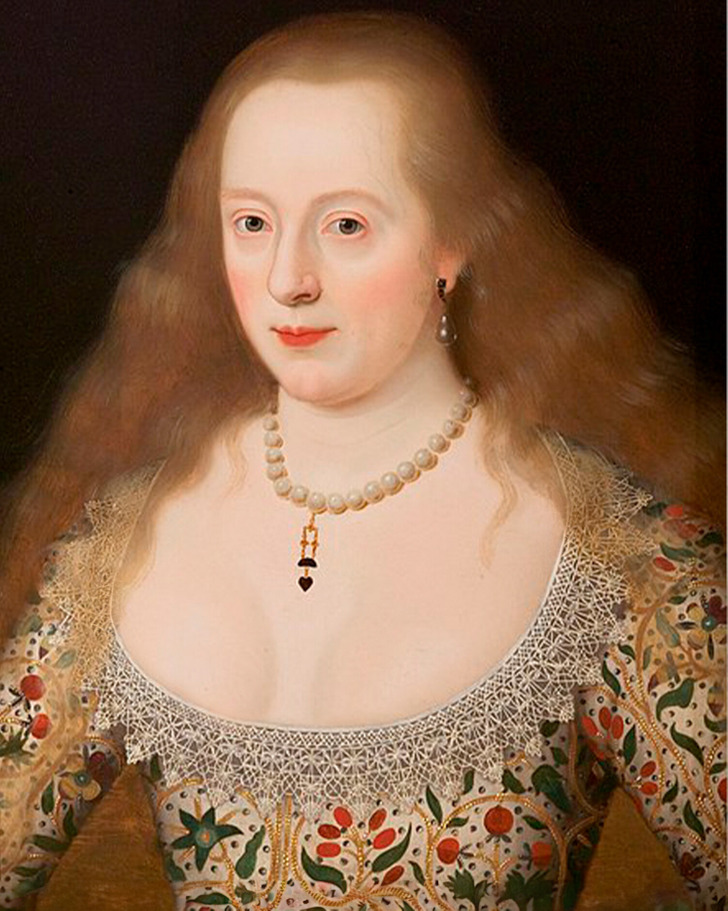I think, I can never earn over which I paid by my precedent employer, but I was wrong, world is so large to try their fate. but now I am making $52/h even more,and easily earn minimum $1300/week, on the experience everyone must try to do work online, easy way to earn, here's an example.
𝐰𝐰𝐰.Richnow05
10 Fashion Trends From the Past That Can Shock Even Modern Fashionistas
"Things used to be better in the past," we sometimes say when look at the current fashion trends. However, if you dive deeper into the trends of the past centuries, it's unlikely that you'll want to turn back the time. Colorful eyebrows, blue drawings in the décolleté area and corsets that squeezed down the waist to 13 inches are just a few of them.
Moisturized skin no matter what.

Noble women of Ancient Rome could afford even the most expensive facial product of that time. And this was the sweat of gladiators. It was collected in bottles, mixed with olive oil and presented to ladies as a magical elixir that improved skin color. Well, the Romans weren't exactly squeamish.
Two eyebrows are good, but one is better.
Eyebrows are probably that facial feature that suffered the most to comply with beauty standards of different epochs. For example, Ancient Greece introduced the unibrow into the trends, and if a woman didn't have one, she used a special "wig" made of goat hair.
Colorful eyebrows are nice too.
In China, colorful eyebrows came into fashion in the 2nd—3rd centuries. Well, at least this happened during the time of an emperor who ordered his wives to "wear" eyebrows of blue color. To comply with their precious spouse's wishes, women would shave off their natural eyebrows and then draw new ones, using expensive colored ink imported from other countries. This not only gave the emperor aesthetic pleasure, but also demonstrated his wealth to those around him because only very rich people could afford foreign inks.
Looking like a baby
At the end of the 14th century, in the times of Queen Isabeau of Bavaria, high foreheads and swan necks became highly fashionable. To meet these standards of beauty, ladies shaved off hair on their foreheads and the back of their necks and plucked their eyebrows. The idea behind it was to resemble the head of a baby, which made the women appear pure and innocent.
Gentlemen prefer blondes. The Proto-Renaissance representatives do too.
Thanks to Petrarch and his muse Laura, whom he praised in his poems as a role model of beauty and virtue, blonde hair became fashionable in the 15th century, so women began to dye their locks to make them golden. However, this procedure took several days.
Thus, one of the treatises of the 12th century described the process of hair coloring like this. It was carried out in 2 stages: after applying the first mixture of several components, the head would be covered with leaves for 2 days, then the first mixture would be washed off, and the second one was applied to be removed on the 4th day.
24-inch waist? Too big.
The predecessors of corsets, which were squeezing women's bodies for several centuries, have been known since the Bronze Age. But in Europe, they appeared, according to different versions, in the 15th or 16th century. Corsets became especially popular during the reign of Catherine de' Medici. In this era, this item of wardrobe could reduce the waist up to 13 inches (although its main task was to create a maximally flat silhouette without any curves), which had a bad effect on the internal organs.
“Tattoos” in the décolleté area
In the 17th century, female dresses had so bold necklines that even modern fashionistas could find them too revealing. However, the women of that time not only felt fine wearing deep necklines, they also emphasized the veins with blue paint to create the illusion of delicate, thin skin.
Skin as white as snow
The fashion for very white skin reached its peak in England in the 18th century. To make the skin as white as possible, women sometimes used exotic remedies, such as dried horse dung. The most dangerous of all, however, was lead, which was used to make whitewash for the face. However, the highest concentrations of lead could be found in the red paint applied to the lips and cheeks to create contrast.
The key to a beautiful smile are someone else's teeth.
People of the Georgian era did really painful things with their teeth. To give them the shade of noble porcelain, they used a powder, the main component of which could be sulfuric acid. Of course, this powder only ruined their teeth.
But the wealthy clients of the dentists of the time could afford so-called "implants." Those were teeth of live donors who were generously rewarded. The teeth were inserted into empty cavities and attached with wire.
The longer the fingernails, the better
In China, long fingernails were in fashion for several centuries, and the reason for this was quite unusual. Long nails signified that their owner is very wealthy because they don't need to do anything with their hands.
During the Qing dynasty, which ruled the country for almost 300 years (until the beginning of the 20th century), this fashion reached its peak and the nails of some representatives of the upper classes could reach 10 inches in length. However, it wasn't very convenient to wear them, so many people kept their nails long only on the little and ring fingers. In order to keep the nails intact, people wore peculiar "covers" that were made of precious metals and adorned with gems.
And here are a few other fashion trends of the past that show how far some people would go for beauty.
Comments
Let's not forget foot binding!
Related Reads
20 Hollywood beauties who used to look much more ordinary

Paris Hilton Finally Showed Her Daughter's Face — People Are Noticing the Same Thing

I Left My Husband Because of What He Wanted Us to Do on Our Wedding Night

12 People Witnessed a Supernatural Event and It Haunts Them to This Day

12 Exes Who Made Life Seem Like a Dramatic Episode From a Soap Opera

’’We Got Stares’’, Parents Choose to Remove Baby Girl’s Rare Birthmark to Avoid Rude Reactions

“1000-lb Sisters” Star Stuns in a Swimsuit After Dramatic Transformation and Looks Unrecognizable

14 Mysterious Events That Made People Think: “I Won’t Get Over This!”

11 Real-Life Stories That Prove Family Love Has No Limits

12 People Share Restaurant Unforgettable Scenes That Took a Crazy Turn

15 Stories From Housekeepers That Truly Stunned Us

16 Taxi Drivers Told Us Their Strangest Job Stories and They Could All Win a Best Plot Award









